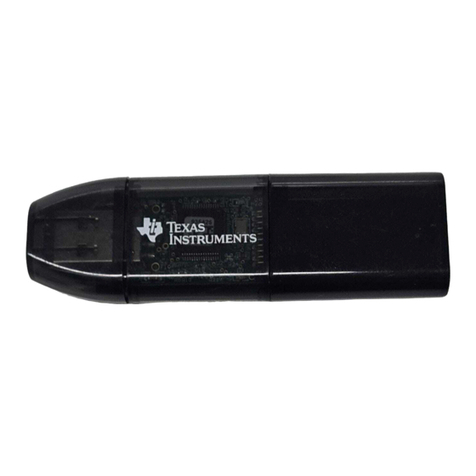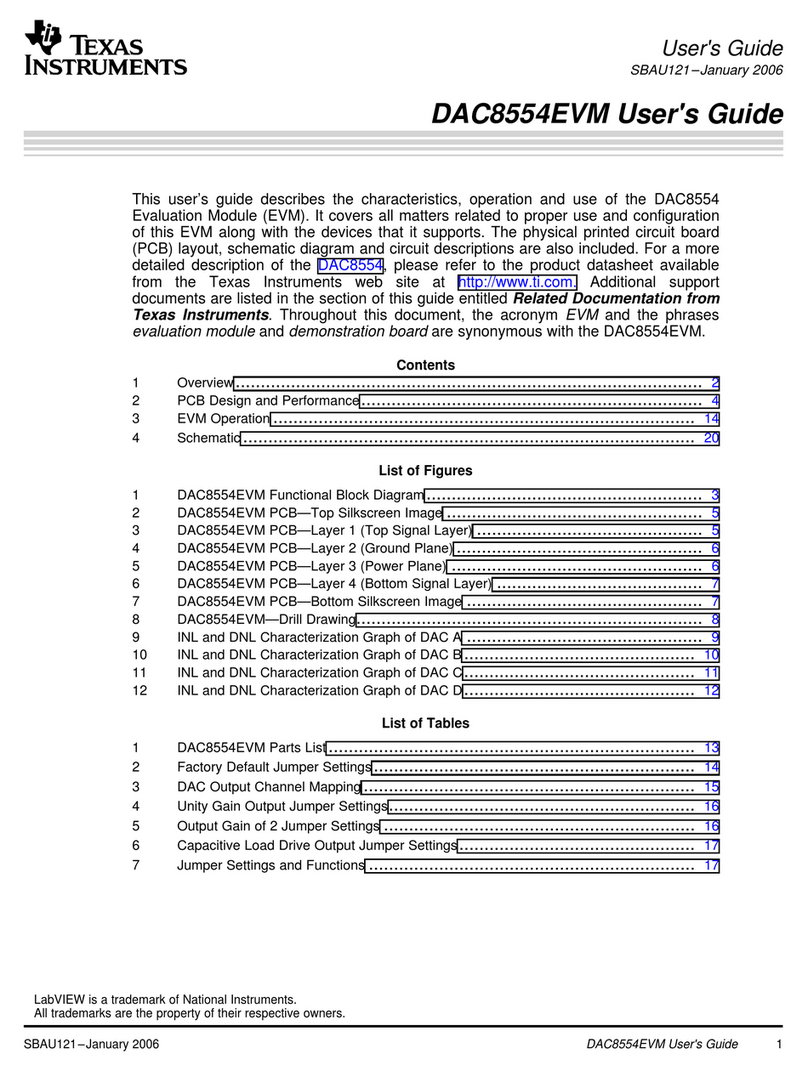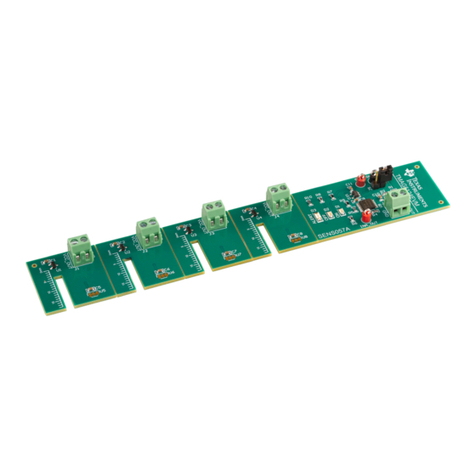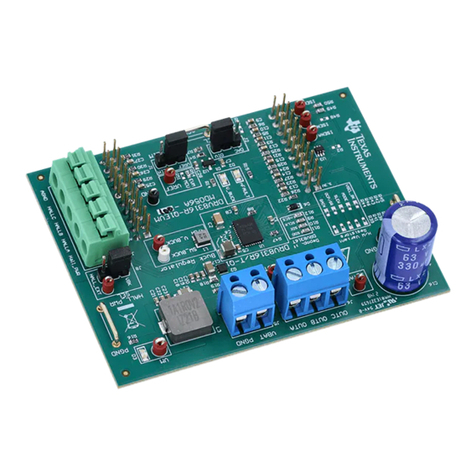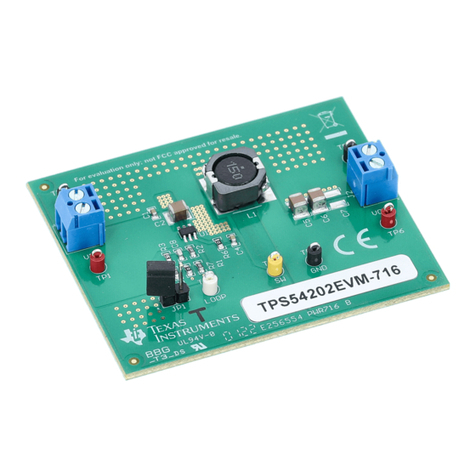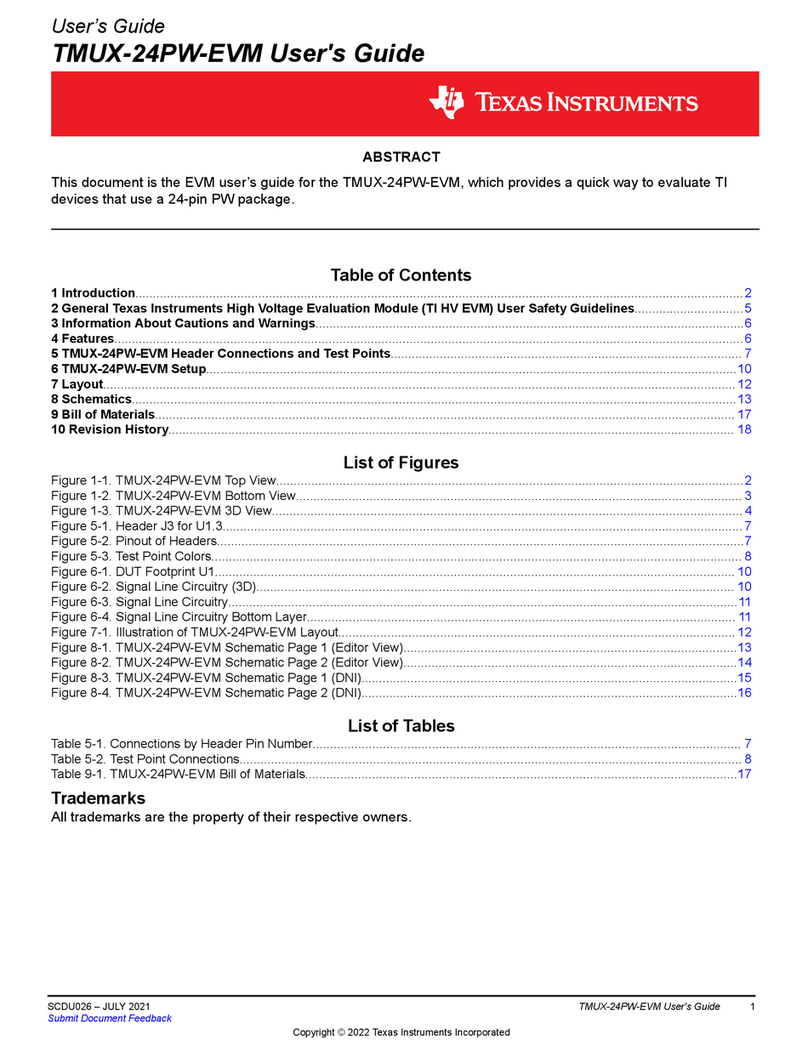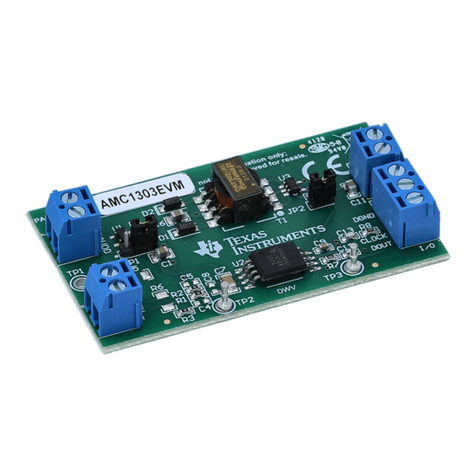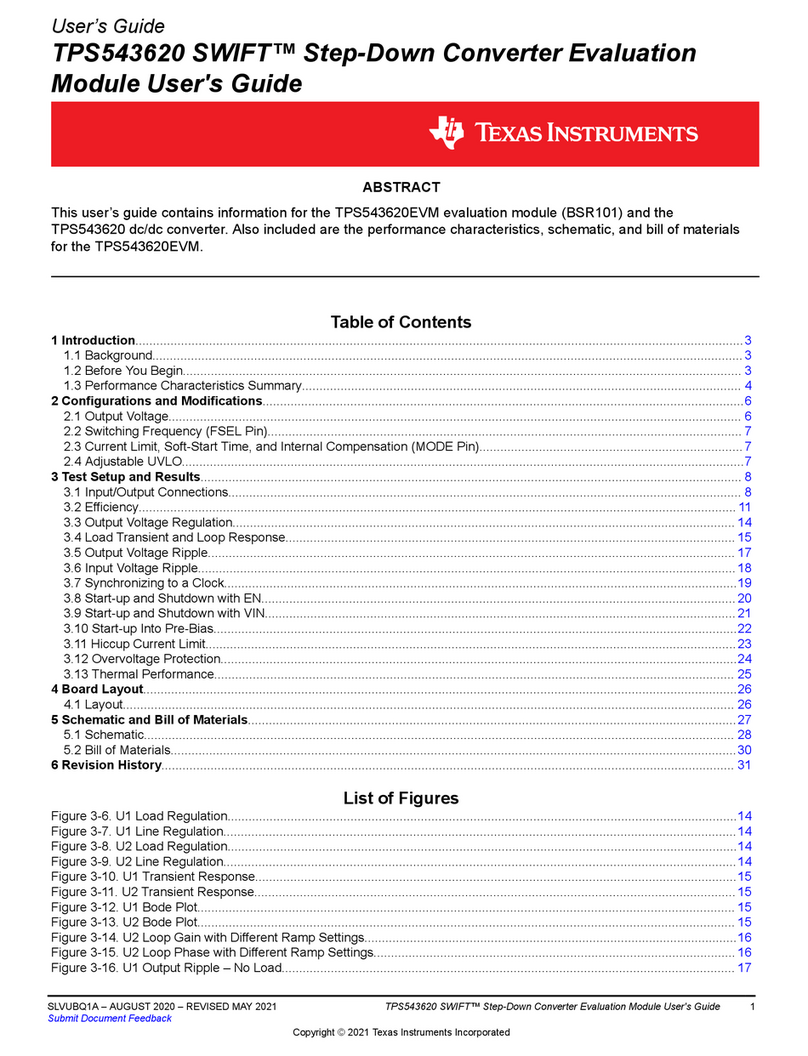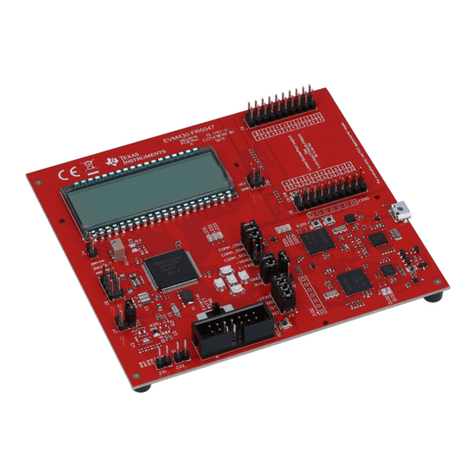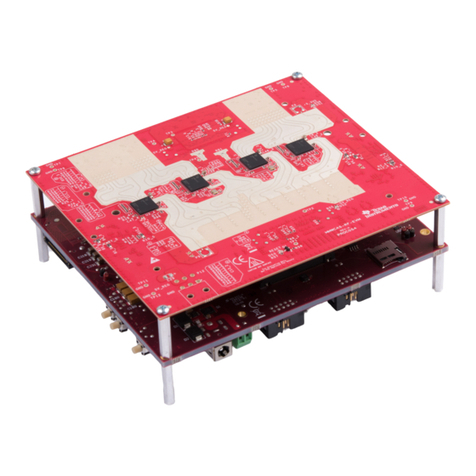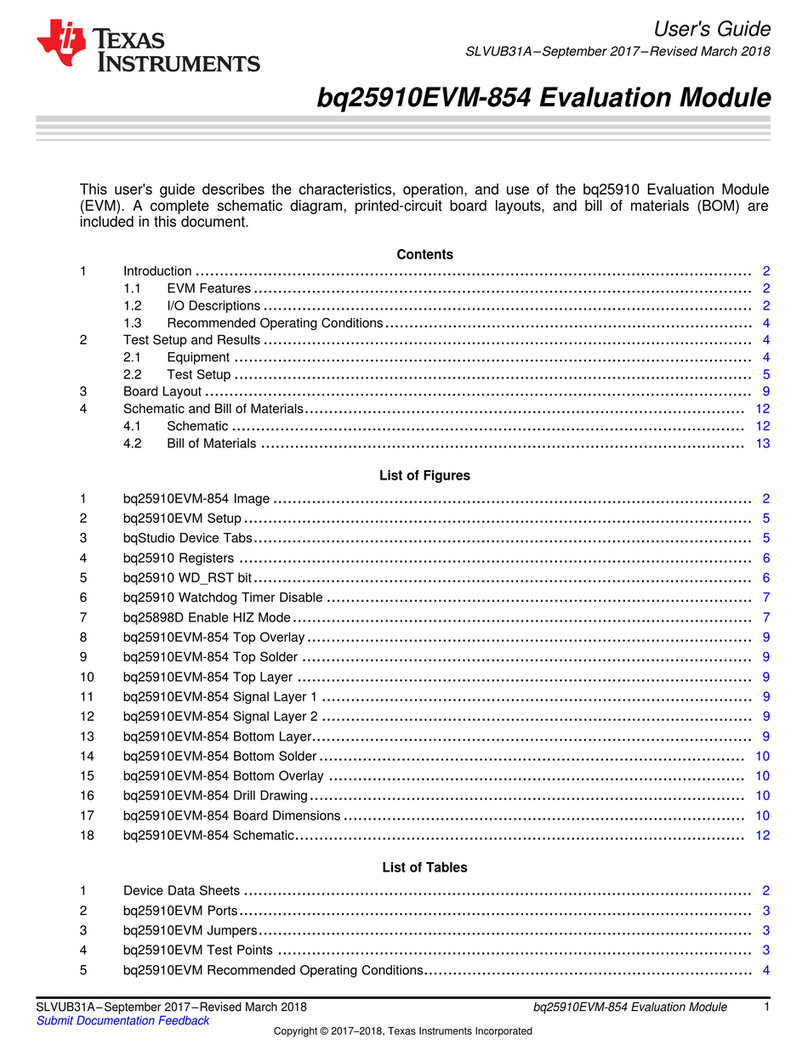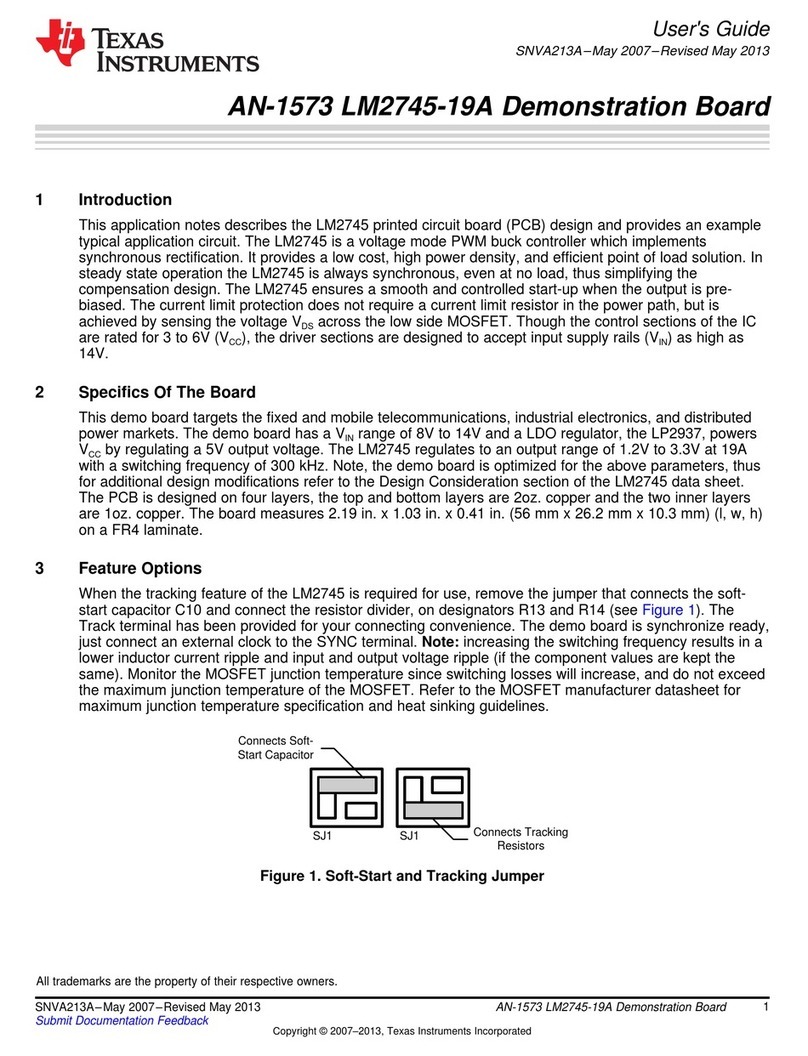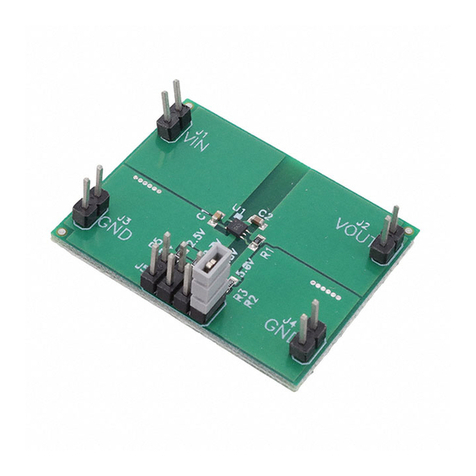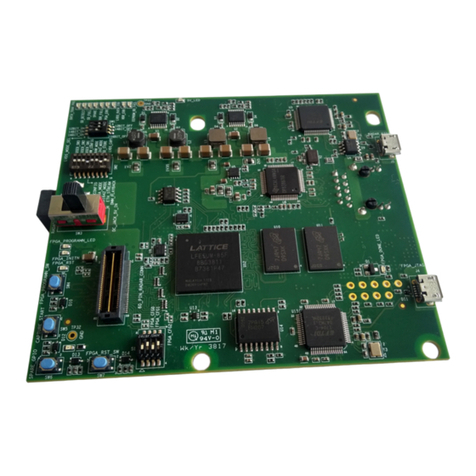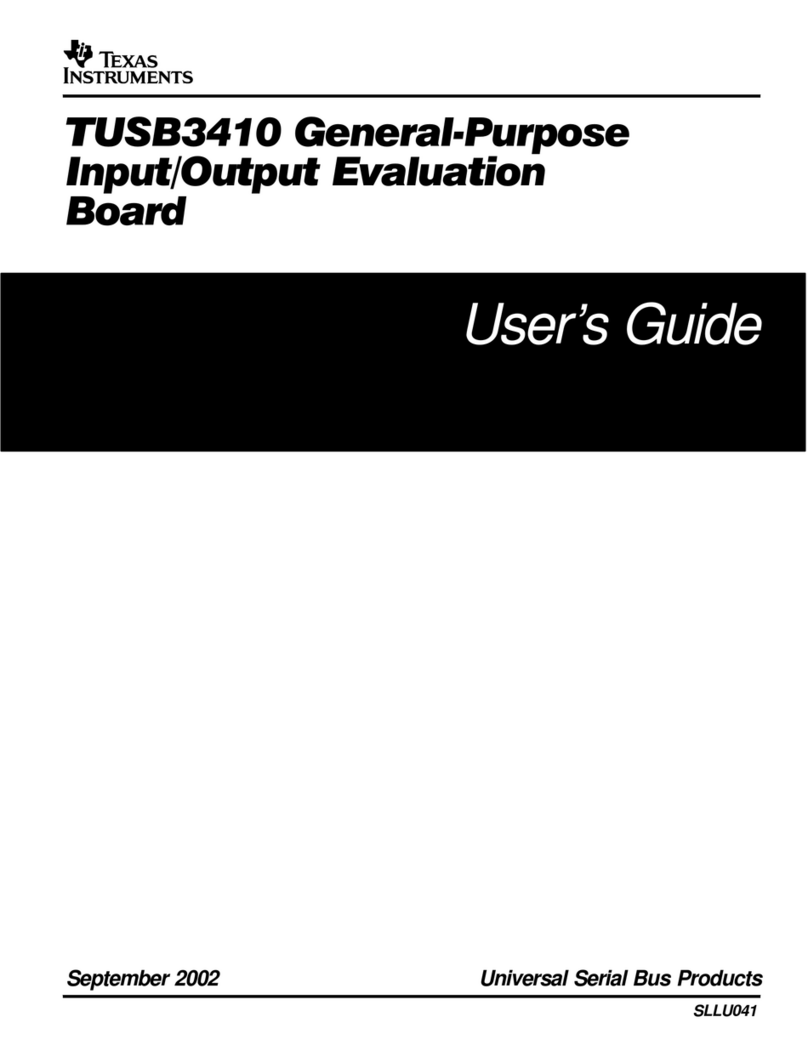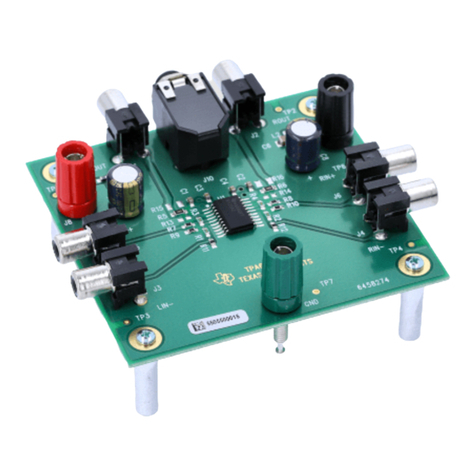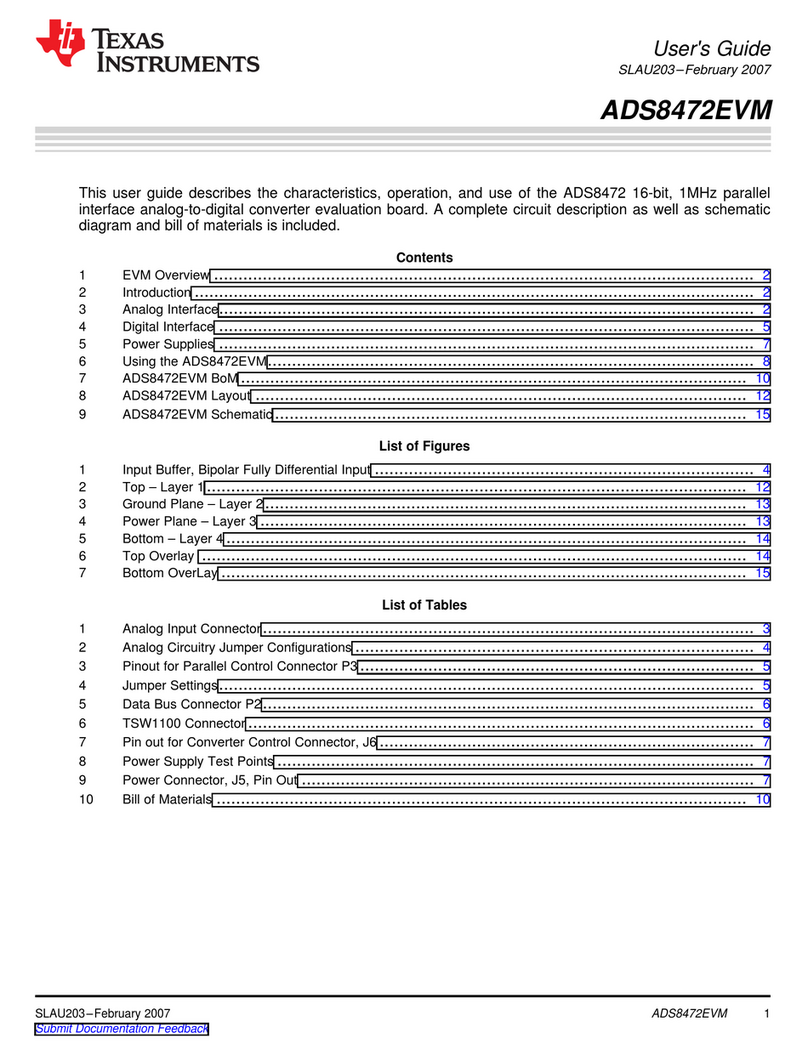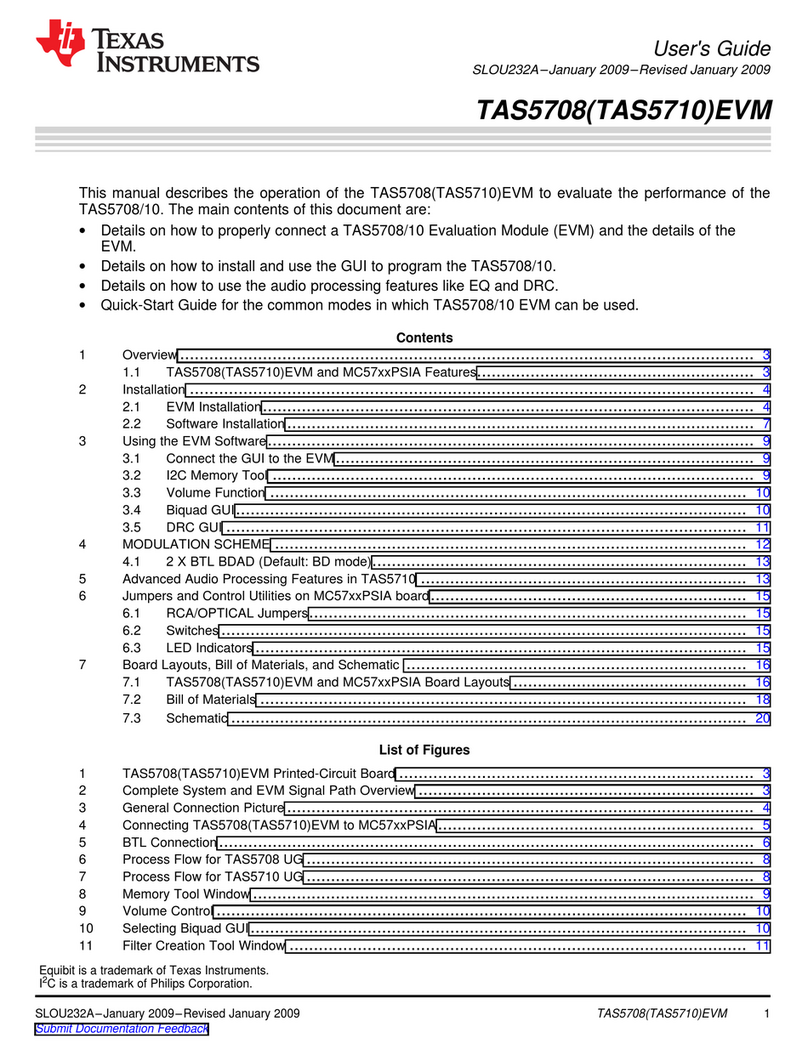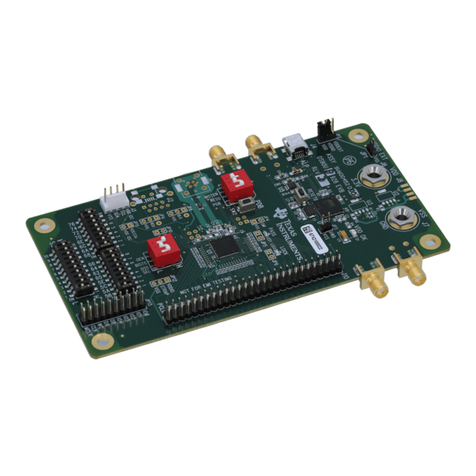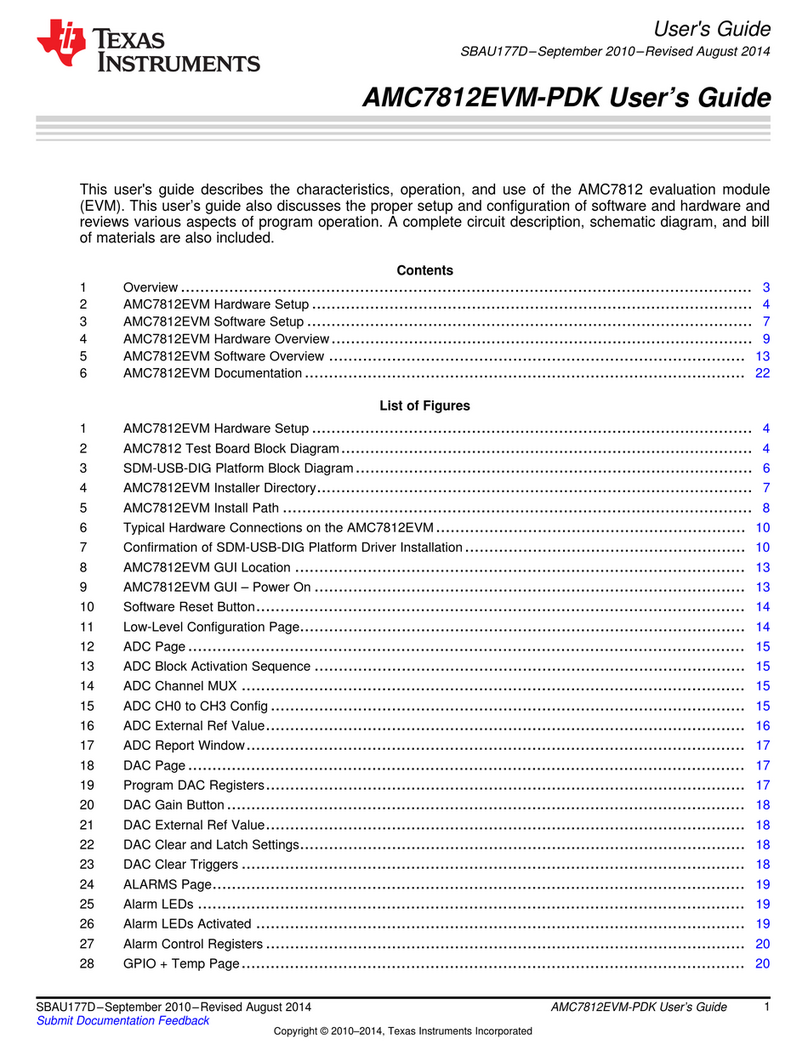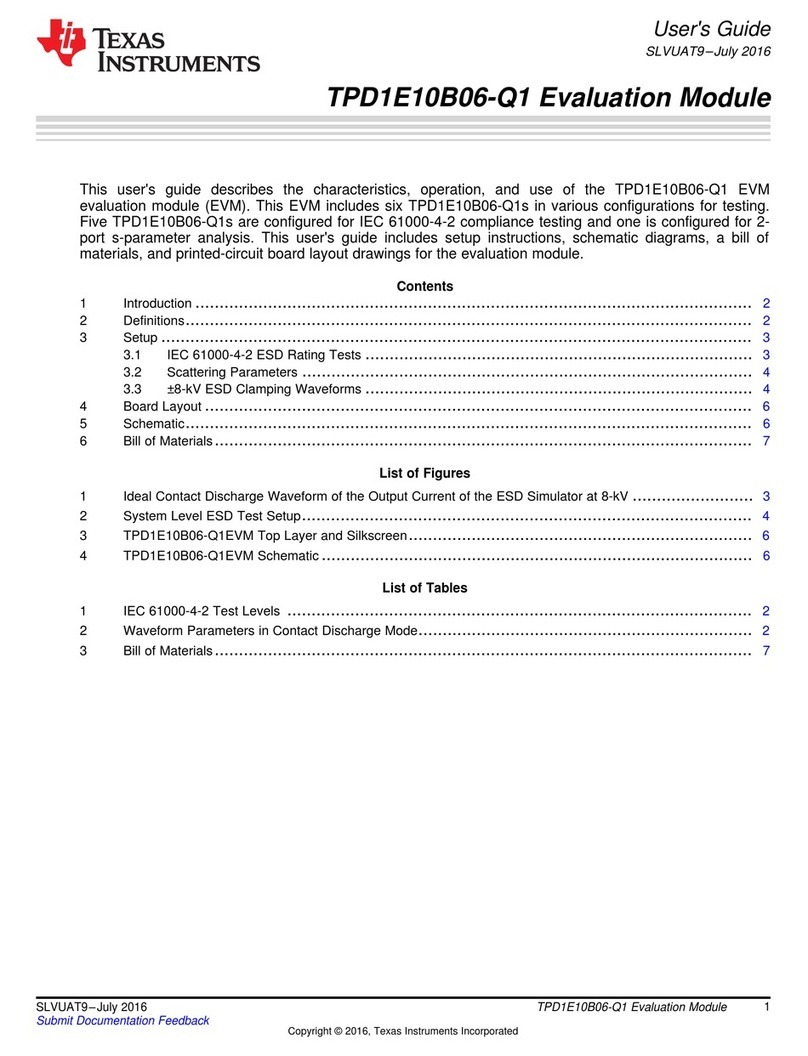
2.2 Equipment Requirements
2.2.1 Personal Computer
2.2.2 Printed Circuit Board Assembly
2.2.3 USB to I
2
C Adapter
2.2.4 Software
2.2.5 Power Supplies
JP6 – DS1
JP6 – DS1
JP6 is used to connect the cathode of the DS1 LED to the DS1 pin on the TPS60251. Place a shunt onJP6 to connect the WLED to the DS1 input. Remove the shunt to measure the DS1 current or use anexternal WLED for DS1.
JP7 – DS2
JP7 is used to connect the cathode of the DS2 LED to the DS3 pin on the TPS60251. Place a shunt onJP7 to connect the WLED to the DS2 input. Remove the shunt to measure the DS2 current or use anexternal WLED for DS2.
JP8 – EN
JP8 is used as the hardware enable for the TPS60251. Place a shunt in the ON position to turn theTPS60251 on. Place a shunt in the OFF position to turn TPS60251 off. All internal register values aredefaulted to 0x00 when JP1 is placed in the OFF position.
For this EVM to operate properly, the following components must be connected and properly configured.
A computer with a USB port is required to operate this EVM. The TPS60251 interface software, which isrun on the personal computer (PC), communicates with the EVM via the PC USB port. The user sendscommands to the EVM and reads the contents of the TPS60251 internal registers through the USB port.
The TPS60251EVM-192 PCB contains the TPS60251 IC and its required external components. Thisboard contains several jumpers and connectors that allow the user to customize the board for specificoperating conditions.
The HPA172 is the link that allows the PC and the EVM to communicate. The adapter connects to the PCwith the supplied USB cable on one side and to the EVM though the supplied ribbon cable on the other.When the user writes a command to the EVM, the interface program, which is run from the PC, sends thecommand to the PC USB port. The adapter receives the USB command and converts the signal to an I
2
Cprotocol. It then sends the I
2
C signal to the TPS60251 board. When the user reads a status register fromthe EVM, the PC sends a command to read a register on the EVM. When the EVM receives thecommand, it reports the status of the register via the I
2
C interface. The adapter receives the informationon the I
2
C interface, converts it to a USB protocol, and sends it to the PC.
Texas Instruments provides software to assist the user in evaluating this EVM. To install the software,insert the enclosed CD into your computer. The software should start automatically. If it does not, go to<Start>, <Run>, and type D:\setup.exe, and click <OK> (assuming that D: is your CD drive). Check theTPS60251 product folder on the TI Web site for the latest version of the software.
The TPS60251 EVM requires two power supplies for operation.
SLVU209A – April 2007 – Revised June 2007 TPS60251EVM-192 3Submit Documentation Feedback
